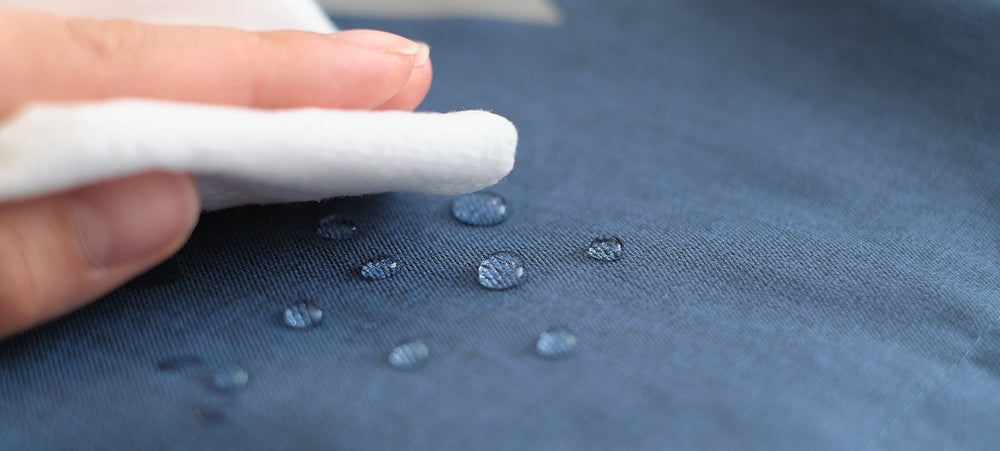Tarps are made to protect. But to keep them strong, they need care too. Over time, exposure to wind, rain, sun, and dirt can wear down even the toughest material. With regular maintenance and smart storage, you can extend the life of your tarp and keep it ready for the next job.
This guide explains how to clean, repair, and store tarps the right way — so you get the most out of every use.
Tarp Repair and Cleaning
Tarps can take a beating, but small issues can quickly grow into major damage if not handled early. That’s why it’s important to inspect your tarp before and after each use.
1. Inspect for Damage
Look for common signs of wear:
- Tears or holes in the fabric
- Punctures or frayed edges
- Broken or missing grommets
- Weak seams or stretched corners
If you find damage, don’t wait. Early repairs are faster, cheaper, and more effective.
2. Make Quick Repairs
Tarp repair tape is an easy way to fix small tears or punctures. Just cut a piece of tape, apply it over the damaged area, and press it firmly. Be sure the surface is clean and dry first.
For missing grommets, use a grommet kit. These kits include the tools and parts to install new grommets. Make sure your tarp is laid flat on a hard surface before punching new holes.
If a seam has split, you can seal it using tarp glue or patching material made for poly or vinyl fabrics.
3. Regular Cleaning
Keeping your tarp clean helps prevent buildup that can weaken fabric over time. After each use, shake off loose dirt and remove any standing water.
For deeper cleaning:
- Use a hose to rinse off dust and mud
- Wipe with a soft brush if needed
- Use warm water and mild dish soap to scrub off tough stains, like pollen or bird droppings
- Avoid bleach, harsh cleaners, or power washers — they can break down protective coatings
Once cleaned, hang the tarp over a railing or fence to air dry completely. Don’t store it while wet.
Tarp Storage
How you store a tarp is just as important as how you use it. Poor storage can lead to mold, fabric rot, or cracked materials — especially in colder or more humid climates.
Follow these steps for proper tarp storage:
1. Always Store Dry
Never store a tarp when it’s wet or damp. Moisture trapped inside folds can lead to:
- Mold and mildew
- Musty smells
- Fiber breakdown or warping
- Permanent stains
Let the tarp dry in open air or sunlight before folding. If you used soap, rinse thoroughly and let it dry again.
2. Fold or Roll Neatly
You can fold or roll your tarp depending on storage space. Folding is better for flat spaces like shelves, while rolling is ideal for round containers or tight spaces.
- Smooth out the tarp to remove air pockets
- Fold corners in and flatten edges
- Avoid sharp creases if storing long-term
- Secure with rope, ties, or bungee cords to hold its shape
Rolling also prevents hard creases and helps reduce wear during storage.
3. Use Airtight Storage When Possible
Keep tarps away from moisture, pests, and sunlight. Store them in:
- Plastic bins with lids
- Airtight bags or contractor trash bags
- Labeled storage tubs in your garage or shed
Avoid placing tarps directly on concrete or soil floors, as they can absorb moisture from the ground. Use shelves or pallets to raise them off the floor.
If you’re storing large industrial tarps or curtains, label each one by size and material for faster access later.
4. Avoid Heat and Sun Exposure
UV rays and heat can damage tarp materials, especially vinyl and polyethylene. Over time, exposure can make the fabric brittle and prone to cracking.
Store tarps in a cool, shaded area — like a garage, basement, or utility closet — where the temperature stays stable year-round.
Additional Tips for Long-Lasting Tarp Use
-
Rotate usage: If you use multiple tarps, rotate them to reduce wear on any one piece.
-
Keep extras on hand: Have a backup tarp or repair kit ready so you're never caught off guard.
-
Label by purpose: Use color-coded bins or labels like "roof repair," "camping," or "painting" for easier organizing.
Final Thoughts
A tarp’s job is to protect — but it can’t do that if it’s torn, dirty, or falling apart. Regular care and smart storage are the best ways to keep your tarp working well for years.
Inspect often. Clean after every use. Store dry, folded, and safe from the elements.
These small steps make a big difference — and help you get full value out of every tarp you own.

